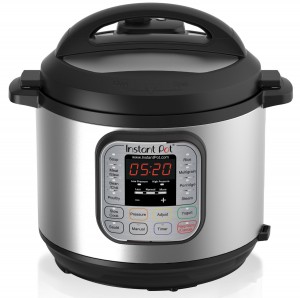Last winter bone broth was the hot new food item; and for good reason! It’s very nutritious, extremely delicious, and provides a health-boost that most of us living North of 40 could use from November to March.

Unlike your standard muscle meats, the connective tissues in animal carcasses add support to bones and joints, and are a rich source of minerals and amino acids that fight inflammation and oxidation, and can boost our immune system.
- Glycine, Proline, and Arginine – all 3 are anti-inflammatory amino acids that help protect against free radical damage. Glycine specifically is a precursor for an important antioxidant called glutathione, and is a requirement for DNA and protein synthesis.
- Marrow – is nutrient dense, a great source of ‘good fat’, and is potentially one of the first animal products hunter-gatherers consumed. Interestingly, it’s also the same part a non-computerized carnivore will go for first. Just before the other organs, and well before the muscle meat. Aside from the fat, this is probably because it’s contents help form bone and connective tissue.
- Gelatin – supports hair, and nail growth, and may be good for the gut; as the gelatin in bone broth can help hold and attract digestive juices.
- Collagen – a natural healer that we start to run short of with age. It’s most noticeable on the skin, but collagen can also help protect and heal the gut lining. Interestingly, the amino acid proline (also found in the broth) is a precursor for collagen.
- Calcium – supplementation with this mineral is not recommended, but a little extra in the diet couldn’t hurt. Since bone is made of calcium phosphate, there’s quite a bit in broth. Which could be helpful if you’re a little weak on the greens, or your stomach’s a little weak on the dairy.
- Electrolytes (magnesium, sodium, potassium) – With the way a low-carbohydrate eating strategy can make you release a lot of water and electrolytes, replenishing with these minerals becomes necessary. Magnesium, specifically, can be hard to come by, which is why I recommend supplementing with it in Live It NOT Diet!.
- Sulfur – is something we’ve never really discussed, since it’s generally a non-issue for meat-eaters. But that being said, it’s present in bone broth and it fights inflammation and oxidation. You may recognize it by it’s over-the-counter organic compound name, MSM, which is typically supplemented by those with arthritis and chronic pain.
- Glycosaminoglycans (Hyaluronic acid, Chondroitin sulphate) – are found in the cartilage and appear to protect against osteoarthritis (1, 2). Chondroitin is often paired with glucosamine (also found in bone broth) to treat joint pain and osteoarthritis.
Fortunately, bone broth is easy to make at home. And since we’ve all become animal protein snobs in the 21st century – opting for boneless, skinless, perfectly-manicured cutlets – you can do it on the cheap!
That being said, quality DEFINITELY matters. So spend a little bit extra on the free-range poultry or grass-fed red meat bones. With a local farmers market being your best bet.
The Bone Broth Protocol:
- Roast Bones for 15 minutes in the oven at 350 degrees
- Place Bones in 5 gallon pot with 1 gallon (16 cups) of filtered water
- Add 2 tablespoons of Apple Cider Vinegar and let sit for 30 minutes
- Chop 2 carrots, 2 celery stalks, and 1 onion, and add to the pot with 1 tablespoon of salt, 1 tablespoon of pepper, and any other spices (Note: hold off on adding garlic to the last hour or so of cooking)
- Bring mix to a boil, and then reduce to a simmer
- Let simmer for 24-48hrs (less for poultry, more for red meat)
For the first few hours of cooking, there’s usually quite a bit of sediment on top. So, you’ll need to check on it every 20-30 minutes and scoop that off with a strainer. But after 2 hours or so, there’s no maintenance on your end.
Note: If you don’t have the time to do this, or your concerned about your stove being on for that long, you may want to invest in a pressure-cooker:
Once your bone broth is ready, run it through a strainer and either separate it into jam jars for storage in the fridge, or pour it into ice cube trays for future use. Something that’s more like a muffin tin, but with a little flexibility, seems to work the best if you decide to freeze.
Drink it straight up, use it in soups, or season vegetables with it. But either way, shooting for 1 cup every few days in the colder months is highly recommended. Personally, I try to drink a half cup in the evening; as I’m convinced the extra shot of glycine and magnesium helps me sleep better.
Stay Lean!
Coach Mike
RELATED ARTICLES:
Why Grass-Fed Meat Is Worth It?
Beyond Live It NOT Diet! - Repair Your Gut
Moving From Healthy to Healthier in the New Year
5 Servings/Day or 1 Serving/Month - The Real Nutrient Dense Food



